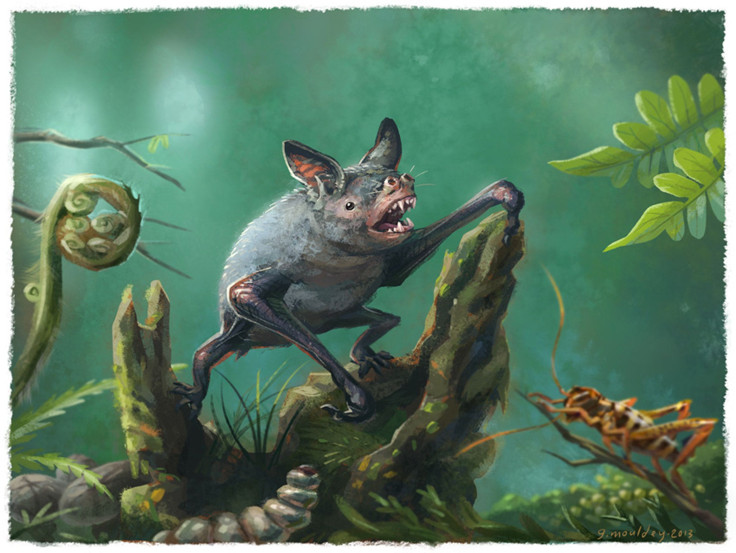Extinct Bat Was 3 Times Larger Than Average And Ate Everything, Fossil Shows

The fossil of an extinct animal in New Zealand belonged to an enormous, burrowing bat that lived millions of years ago.
Researchers described the newly discovered species based on teeth and bones from the creature, according to a study in the journal Scientific Reports. All of the remains point to a bat that weighed about 40 grams and those teeth suggest it ate both the meat of small invertebrates and lots of plants.
That weight translates to about 1.5 ounces. While that does not sound like very much, it’s practically colossal by bat standards — many species weigh just a fraction of an ounce. When people imagine bats, they may picture larger mammals with huge wingspans. But out of the hundreds of bat species, the smallest one is lighter than a penny, according to the U.S. Department of the Interior.

The new extinct bat, dubbed Vulcanops jennyworthyae, was about three times the average bat weight and lived between 16 million and 19 million years ago. It was a burrowing bat, which means that although it flew around like others of its kind, it also walked the forest floor. It worked its way underneath leaves and into trees to look for food and build its home.
According to the study, the flying creature is “the first new bat genus to be added to New Zealand’s fauna in more than 150 years” and holds clues about the evolution of these creatures in the area during prehistoric times — “this fossil bat indicates that there once was greater ecological diversity in the New Zealand’s bat fauna and … it signals substantial loss of diversity since the Miocene.”
The Miocene was a geological time period that ran from about 23 million to 5 million years ago. At that time, New Zealand was a “semitropical to warm-temperate” rainforest, the study notes.
“After the middle Miocene, global climate change brought colder and drier conditions to New Zealand, with significant changes to vegetation and palaeoenvironments,” the authors wrote in the study. “It is possible that this general cooling and drying trend also drove extinction of the Vulcanops lineage” and reduced bats’ biodiversity.
The University of Salford noted in a statement that burrowing bats used to exist throughout the once-connected landmasses of the Southern Hemisphere, including in Australia, South America and perhaps even Antarctica, but today are only found in New Zealand.
“This strange fossil bat is very different from the bats living in New Zealand today, and shows that we are missing a huge amount of their evolutionary history,” researcher Robin Beck said in the statement.
© Copyright IBTimes 2025. All rights reserved.





















